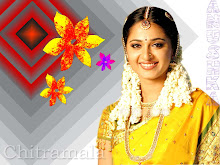

URDWA PARIVRITTA JANU SIRSANA:-
Translation:
In Sanskrit, Urdwa means Upward, Parivrtta means to turn around or revolved. Janu means knee and sirsa means head. Asana means pose in Sanskrit. Thus Parivrtta Janu Sirsasana is the Revolved Head-Knee Pose.This is a seated forward bending posture which is also a twist as the extended torso revolves and descends over an extended leg. In the final pose, the back of the head rests on the leg with the torso facing as far upwards as possible. Eventually, the final pose has the torso so revolved that the navel faces directly upwards. In the pose the hips open and there is an intense stretch in the side body. The heart also opens in this posture and you may notice the flowing of emotion when this posture is practiced.Move slowly and carefully into this posture. It is an extremely powerful and intense stretch for the body. Bring your complete awareness to what you are doing in order to prevent injury. Connect with your breath as you move.
Benefits:
"...this pose stimulates the blood circulation to the spine and relieves backaches. In Janu Sirsasana the abdominal organs are contracted, here they are stretched on both sides. This is a very invigorating pose."The pose opens the hips with elongation of the muscles that cradle the pelvis. Performing the posture also stretches the hamstrings.The spine gets blood flow and the back muscles are stretched, which are therapeutic to the back and help with backache.The abdominal organs are rejuvenated with space created for them by the stretch.Adrenal glands and kidneys are cleansed of toxinsMental and emotional toxins are cleared out. There is opening and surrendering, with a heart opening in the posture. Practitioners may experience vulnerability as emotions are churned up and energy moved in the body mind.
Cautions:
If you have an injury to the knees, hips, arms, or shoulders, don't do the pose without guidance from a teacher.Respectfully listen to your body as you gradually ease into the posture. Allow emotions to flow and remember to breathe which moves and shifts energy in the body.









































